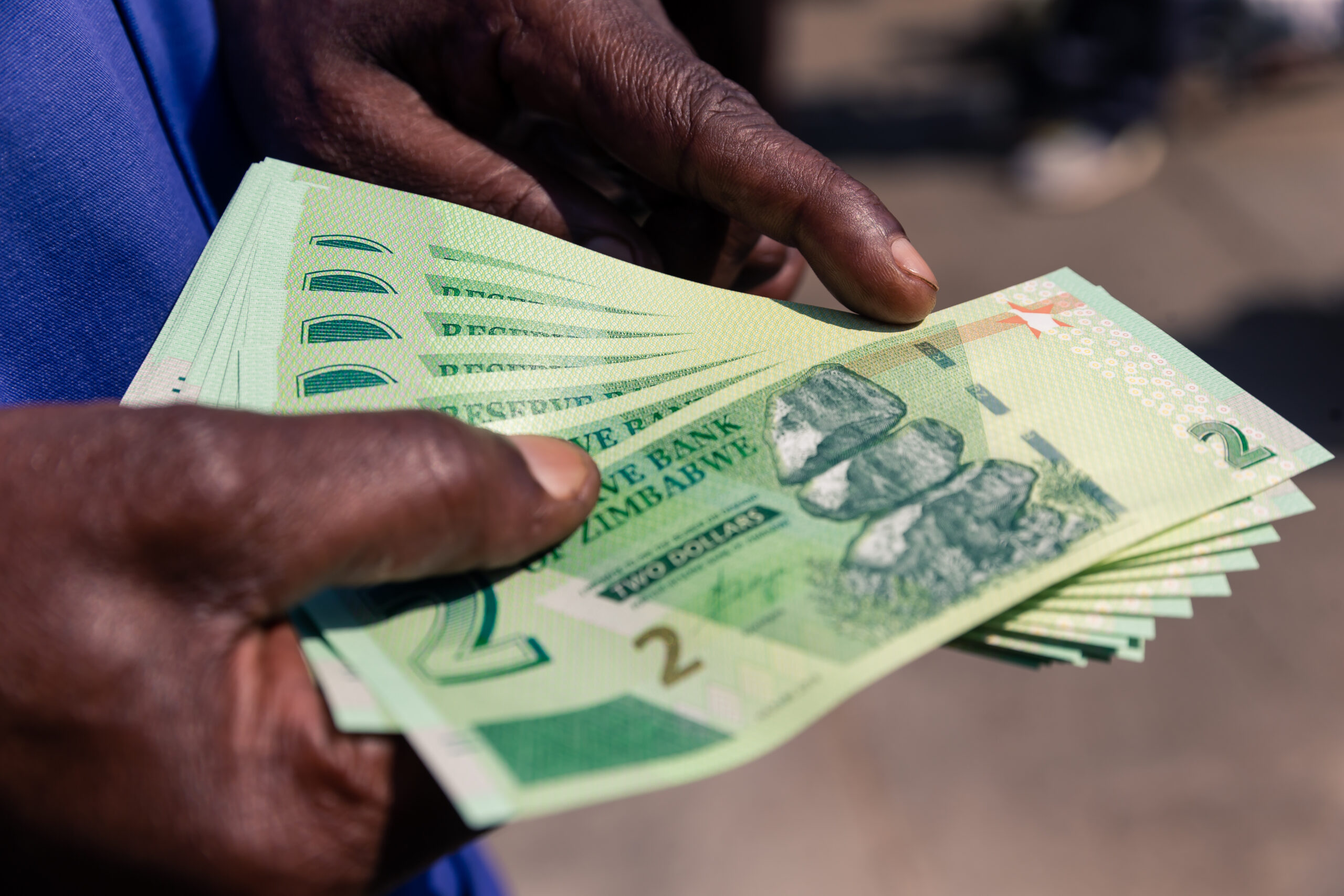Zimbabwean dollar continues to firm against US dollar
The Zimbabwe dollar further gained ground yesterday trading at US$1:$4 505 from $4 537 last week, a strong affirmation of the positive response to a cocktail of policy interventions by the Government geared at stabilising the economy.
According to the Reserve Bank of Zimbabwe (RBZ) foreign exchange auction Tuesday results, US$20 million was on offer with US$14,5 million worth of bids acceptable with US$7,9 million allotted.
Photo Credit: Getty Images
A total of 16 bids were received and six were allotted.
The local dollar has been regaining value at the formal wholesale foreign currency auction system with a similar positive outcome on the parallel market, which has also been forced to review its rates downwards, thereby closing the premium difference while ensuring market stability.
The black-market rate, which had gone as high as US$1:ZWL$10 000 in the past few weeks is now ranging from ZWL$6 000 to ZWL$8 000 for US$1 while the official rate stands at US$1:ZWL$4 505 from a peak of close to 1:7 000.
The drop in exchange rates comes following the introduction of a string of economic policies put in place by the Government to restore the value of the local currency.
This has triggered a sustained drop in the price of goods and services from Government agencies and the retail sector.
The Zimbabwe National Roads Administration (Zinara) took the lead in aligning its charges with prevailing exchange rates. The Bulawayo City Council has similarly adjusted its bills in line with the prevailing official exchange rate and yesterday charged ZWL$4 973 to the US-dollar, inclusive of the 10 percent permissible margin.
Last week, the Grain Millers Association of Zimbabwe (GMAZ) announced a reduction in the prices of maize meal, flour and salt as part of efforts to protect the consumers as the Government’s intervention measures to stabilise the economy take effect.
In a circular to members of the Confederation of Zimbabwe Retailers, Retailers Association of Zimbabwe, wholesalers and other retailers of basic commodities, GMAZ national chairperson, Mr Tafadzwa Musarara said the price reductions are aimed at protecting the consuming public from rampant price hikes.
New prices pegged a five-kilogramme packet of maize roller meal at ZW$15 946,32 or US$2,90, 10kg is now ZW$27 593,65 or US$5,00 and 20kg now costs ZW$52 237,94 or US$9,50.
The price of a two kilogrammes packet of self-raising flour now costs Z$11 547,33 or US$2,10 while the price of a 500 grammes packet of fine salt is now ZW$1 374,68 or US$0,25, one kg fine salt is now pegged at ZW$ 2 639,40 or US$0,48 and two kg is now ZW$5 058,84 or US$0,92.
In its recent annual bulletin, Zimbabwe Public Debt Management Office, a department in the Ministry of Finance and Economic Development said the country’s economy is projected to grow by 5,3 percent this year, better than initial estimates, on the back of improved farm yields, better electricity supply, and strong mineral prices.
The revised economic growth is ahead of estimates by the International Monetary Fund (IMF), the World Bank, and the African Development Bank (AfDB), which have projected the economy would expand by 2,5, percent 3,6 percent and 2,8 percent, respectively.
Zimbabwe’s real gross domestic product growth moderated to three percent in 2022, down from 8,5 percent in 2021, due largely to exogenous and endogenous shocks.
Total output was further constrained by macroeconomic instability in 2022, arising from exchange rate depreciation and hyperinflation.-chronicle











